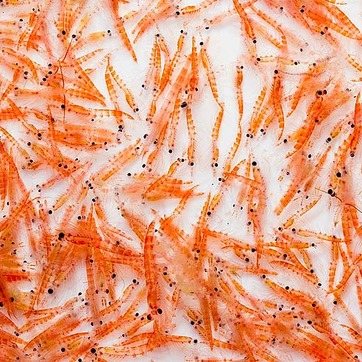Astaxanthin is found in a high concentrations in Antarctic krill – which is why the animal has its striking red colour.
But how does this healthy plant substance get into krill? Quite simply: astaxanthin is contained in high concentrations in plankton and algae, the main food of krill. When they eat, the animals then turn pinky-red like their food. We can also observe this phenomenon in lobsters, salmon and the noble flamingos, for example.

In algae, the red pigment is used to protect against excessive UV radiation. When exposed to sunlight, the algae can form the protective red pigmentation with the help of the astaxanthin it contains. In animals such as the powerful salmon, astaxanthin is concentrated in muscle tissue. In this way they make the incredibly strenuous journey upstream to their spawning grounds.
